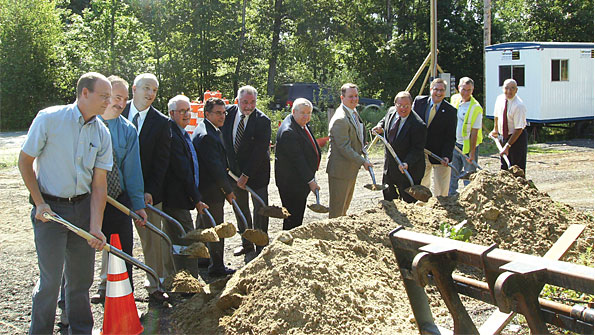Finding ways to finance infrastructure projects
What is in this article?
Divide and conquer
Sutton, Mass., a middle-class community of nearly 10,000 residents, is one place where that approach has been successfully applied. When high levels of iron and manganese were found in a local groundwater supply, water officials realized that a new water treatment plant was needed to correct the problem.
The three wells were located in the Manchaug section of Sutton, in an area within the town that receives its drinking water from the Manchaug Water District. Even though Sutton itself may not have qualified for income-based USDA grants, the Manchaug Water District did because its 400 residents have a median income below 75 percent of the state's median income. As a result, the Manchaug Water District was able to obtain grants, rather than just loans. Ultimately, the USDA gave the Manchaug Water District a 55 percent grant to build a new $1.8 million water treatment facility. The residents in Sutton would not have been granted the federal funds if the Manchaug Water District had not existed.
Virtually any small community with a diverse resident base can pursue this approach. By carving out discrete water, wastewater or other utility districts comprised of residents who satisfy the USDA's salary requirements, cities and towns across the country can qualify for these and other income-based grants. The beauty of this approach is that while it provides access to funds that may not otherwise be available, it also offers the added benefit of getting aid for those in the community who most need assistance.
In fact, the USDA is an excellent source of funds for all types of rural infrastructure programs. The department's Water and Environmental Programs (WEP) division provides a wide range of grants, loans and loan guarantees for drinking water, sanitary sewer, solid waste, and storm drainage facilities in rural areas and cities and towns with 10,000 or fewer residents. Last year alone, WEP provided more than $1.5 billion to fund these infrastructure projects.
Of course, the federal government is not the only potential source of funds for infrastructure projects. Some states also have grant programs that can help. For instance, Massachusetts has a program called MassWorks that is designed to provide grant money to promote employment and economic development. Infrastructure improvement projects can be ideal for these types of grants because they provide short-term construction jobs, as well as year-round and seasonal employment related to local industries that rely on the utilities and infrastructure that are being funded.
Coastal communities in which real estate and tourism play key economic roles, such as Cape Cod, provide good examples. The long-term economic benefits of wastewater and drinking water projects are clear. After all, who is going to buy rental or residential properties if the drinking water isn't safe? How long will vacationers visit if they can't swim in the water because it's polluted? And what happens to the local fishing industry if pollution drives out fish populations?
Obviously, each of these issues is of primary importance to the long-term economic welfare of these coastal communities, and each has a significant impact on local employment. When you look at the issue from this perspective, it is easy to see why cities and towns should seek out employment and economic development grant programs like MassWorks to help fund drinking water and wastewater infrastructure development and improvement.

















A good article that alerts us
A good article that alerts us to hidden or overlooked resources.
However, there’s an even larger problem. Infrastructure projects can be double-edged swords. Well-designed and well-executed projects (water & sewer, transportation, schools, etc) can result in higher land prices that chase affordable development away to cheaper, but more remote sites. This sprawl development then requires the duplication of expensive infrastructure at these more remote locations.
To add insult to injury, the public ends up paying for infrastructure projects at least twice. First, they pay taxes (federal state or local) to generate the funds. Second, they pay higher rents to occupy sites that their taxes have made more valuable as a result of improved infrastructure. Sometimes, we pay a third time, to subsidize affordable development at locations made valuable by infrastructure investments.
Fortunately, some communities have remedied this situation by using value capture to transform their property tax into a public services access fee. This is accomplished by reducing the tax rate on building values while increasing the tax rate on land values. The lower rate on buildings makes them cheaper to construct, improve and maintain. Surprisingly, the higher rate on land values makes land more affordable by reducing the profit from real estate speculation.
As an added bonus, this approach to property taxation creates an economic imperative to develop high-value sites. These tend to be infill sites near urban infrastructure amenities. Thus this approach encourages compact, infill development which saves nearby farmland and reduces the need to prematurely extend expensive infrastructure into exurban areas.
For more information, see “Using Value Capture to Finance Infrastructure and Encourage Compact Development.” It can be found at https://www.mwcog.org/uploads/committee-documents/k15fVl1f20080424150651.pdf